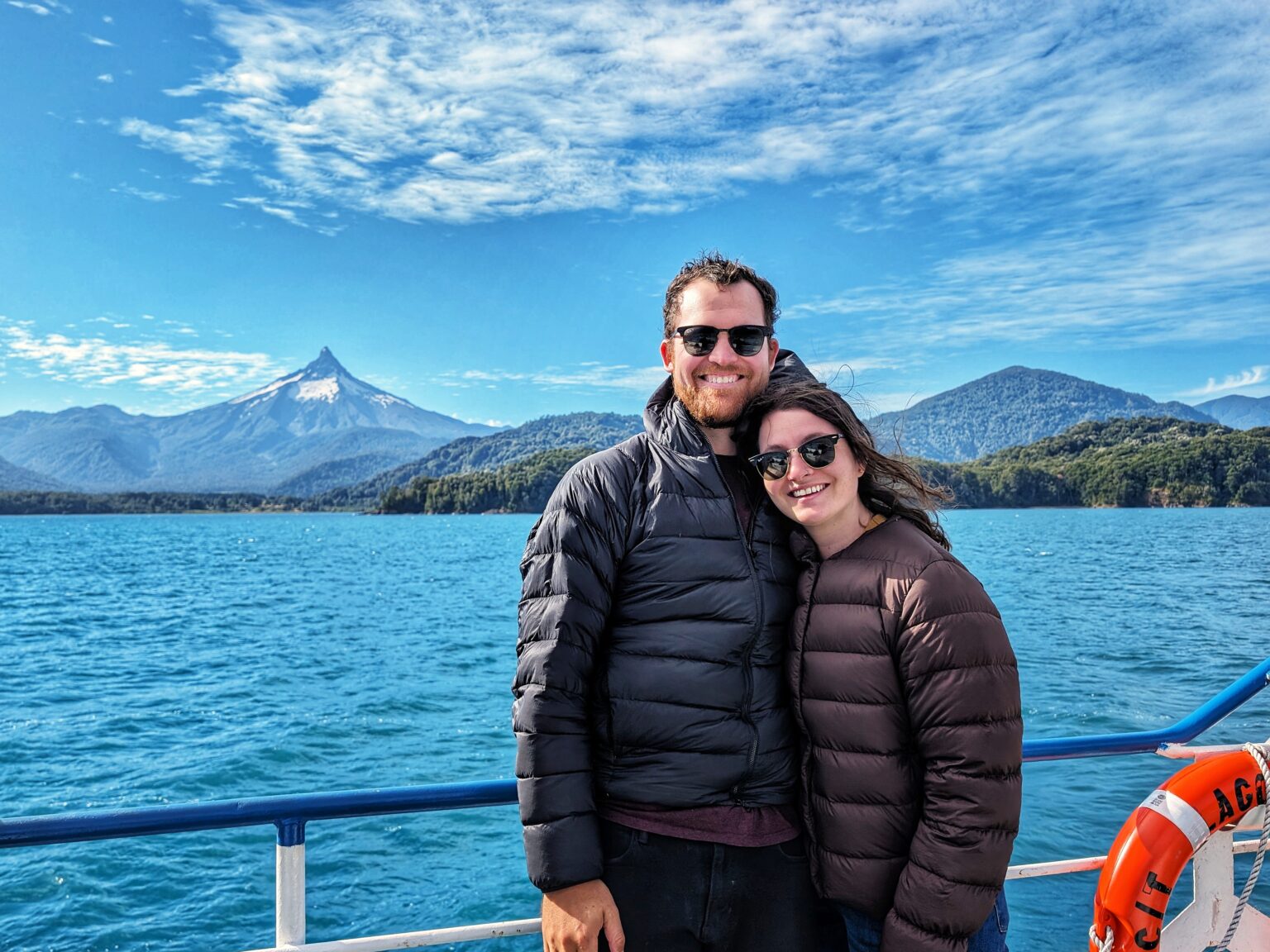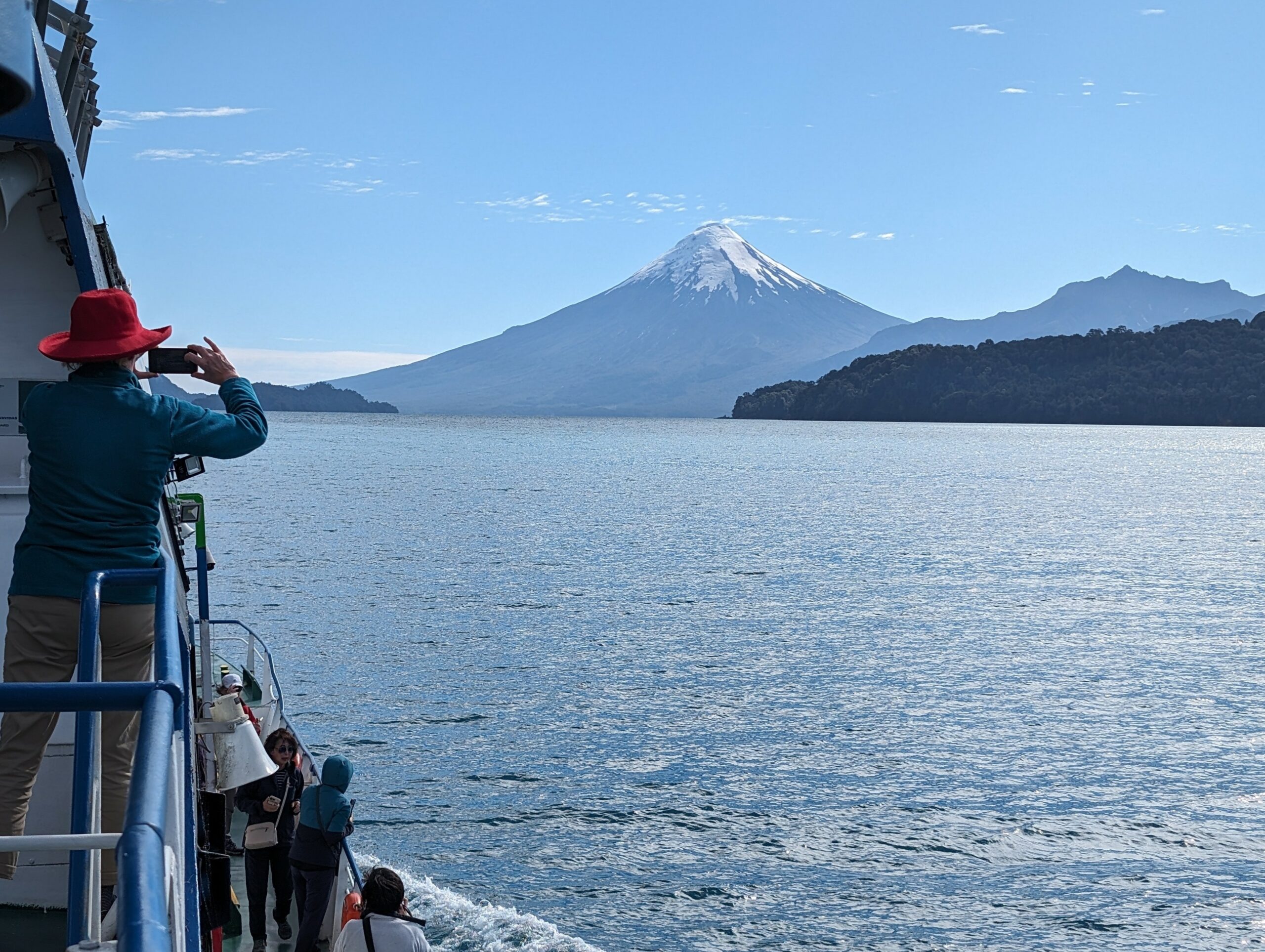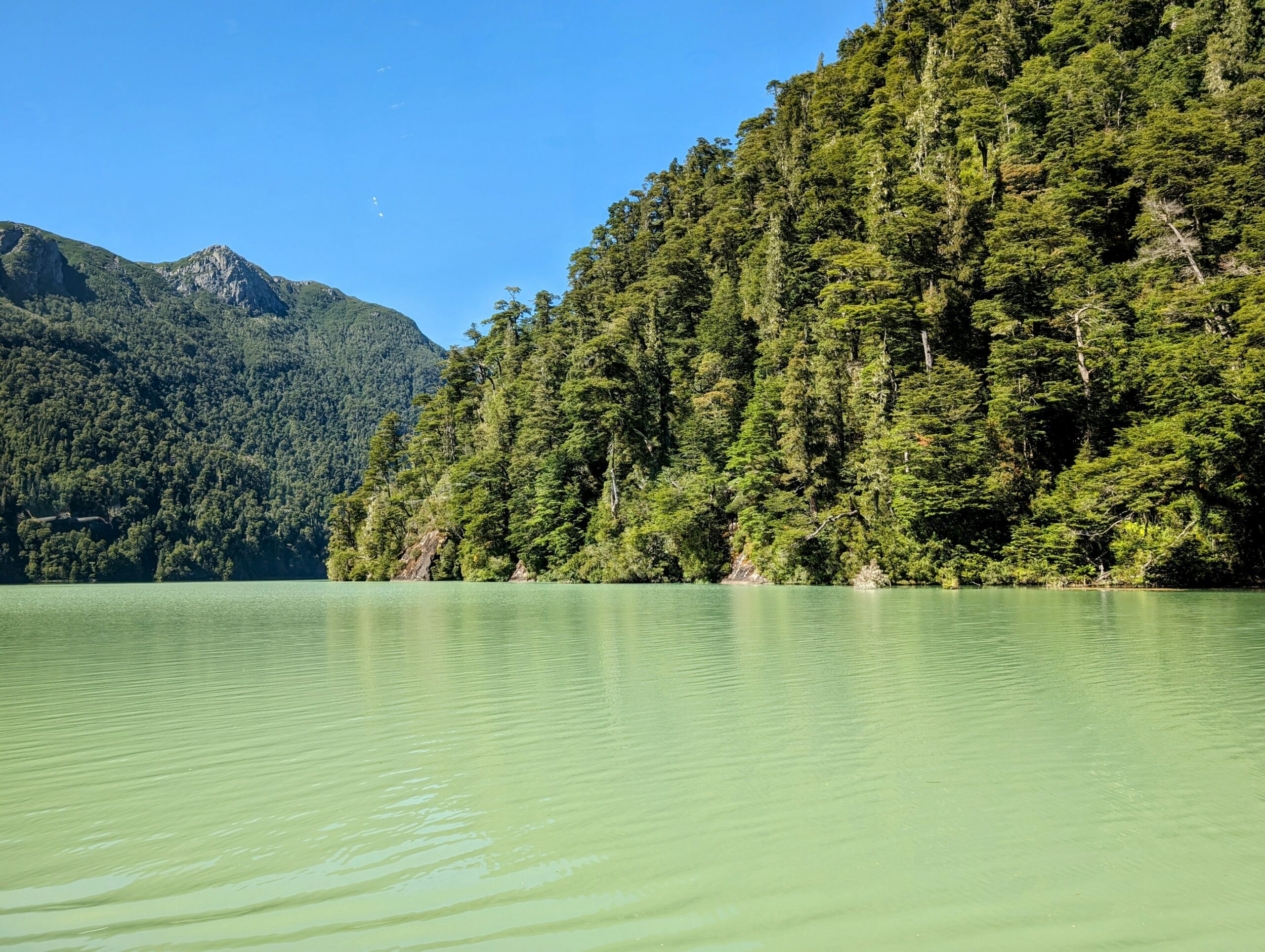Chile and Argentina share a really long border but this border is strongly defined by the Andes Mountains. This mountain range physically separates these two countries and, because of this natural wall, these two countries have incredibly different cultures. (For example, people typically eat dinner at 10 PM in Argentina but cross that border to Chile and people eat dinner at 7 PM). And the reason that these cultures are so different is because this physical barrier is truly a challenge to cross over. The Cruce Andino is an experience that helps make that challenge more accessible and is an unforgettable journey through the stunning nature of this region of Patagonia.
Traveling by bus throughout the Patagonia region allows you to experience the rugged landscape to the fullest. Crossing the border between Chile and Argentina is pretty common down in Southern Patagonia between Ushuaia in Argentina and Puerto Natales in Chile or between Puerto Natales in Chile and El Calafate in Argentina. (You can read more about these experiences here.) These border crossings are typically organized by a transportation company where the drivers help you through the whole process.
About the Cruce Andino
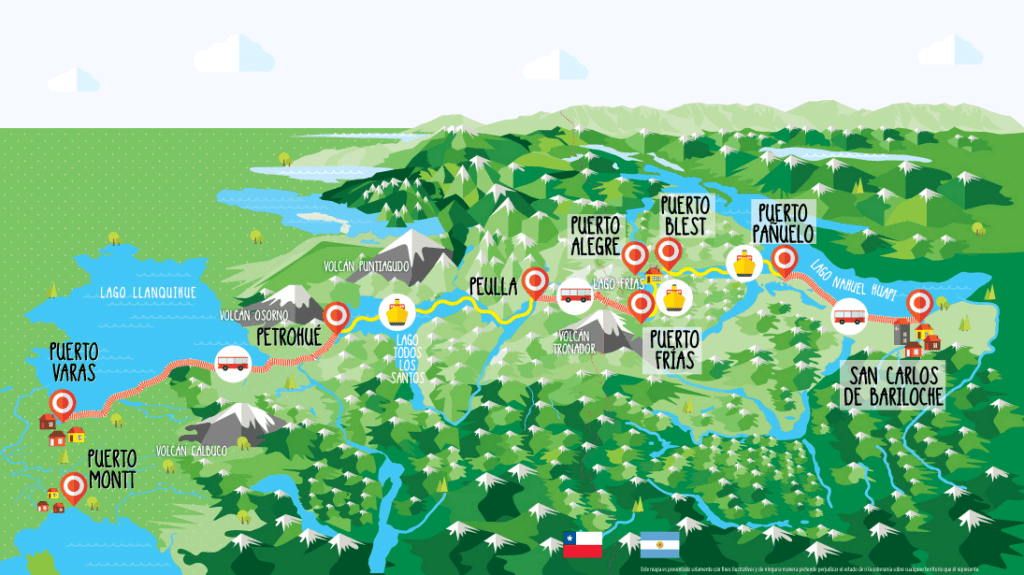
Further north in the Patagonia area, the best place to cross over between the two Lakes Districts of Chile and Argentina is between Bariloche in Argentina and Puerto Varas in Chile. Cruce Andino, through the company Turisur, is an organized scenic crossing which includes 3 ferries and 4 buses. Turisur is the only company that performs the Cruce Andino crossing in this way and adding it to your Patagonia itinerary will make for a memorable way to cross the border between Puerto Varas and Bariloche.
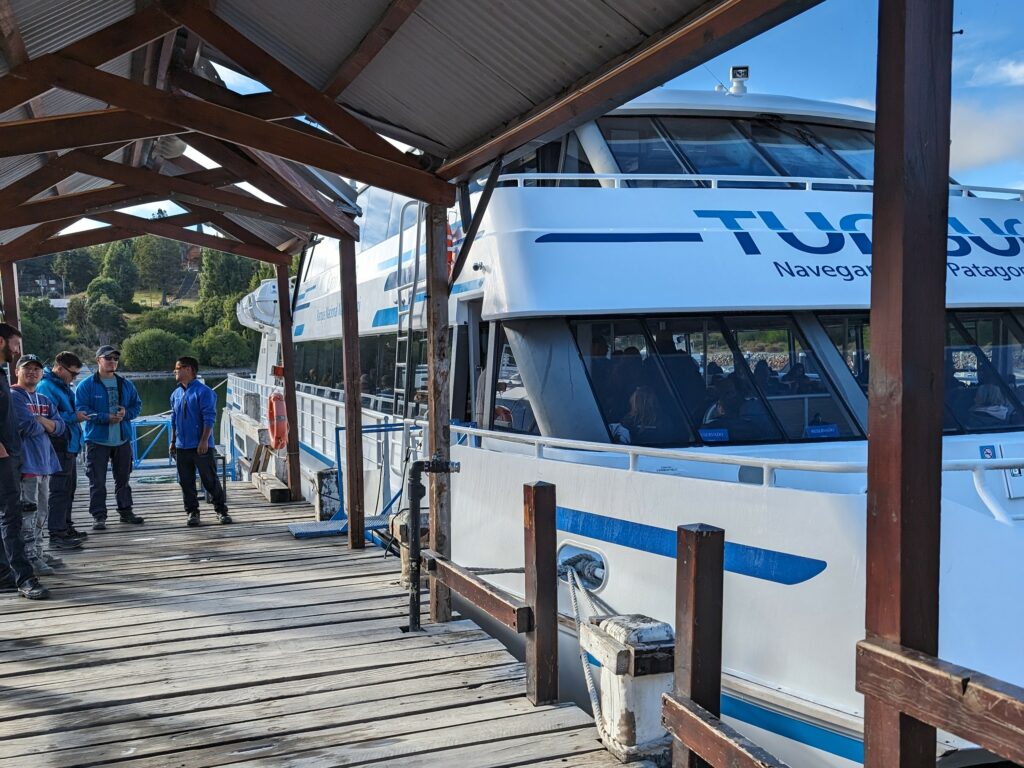
From a comfort and efficiency standpoint, Turisur provides porters to transfer your bags from one form of transportation to the next. In addition, you will have guides throughout the whole day to talk about the history and landscape around you.
The route over the mountain is the same one that Che Guevara took when he traveled through South America. (You can read or watch Motorcycle Diaries to learn more about this journey.) There is an exposition at one of the stops that includes a replica of his motorcycle and a little information about the route he took.
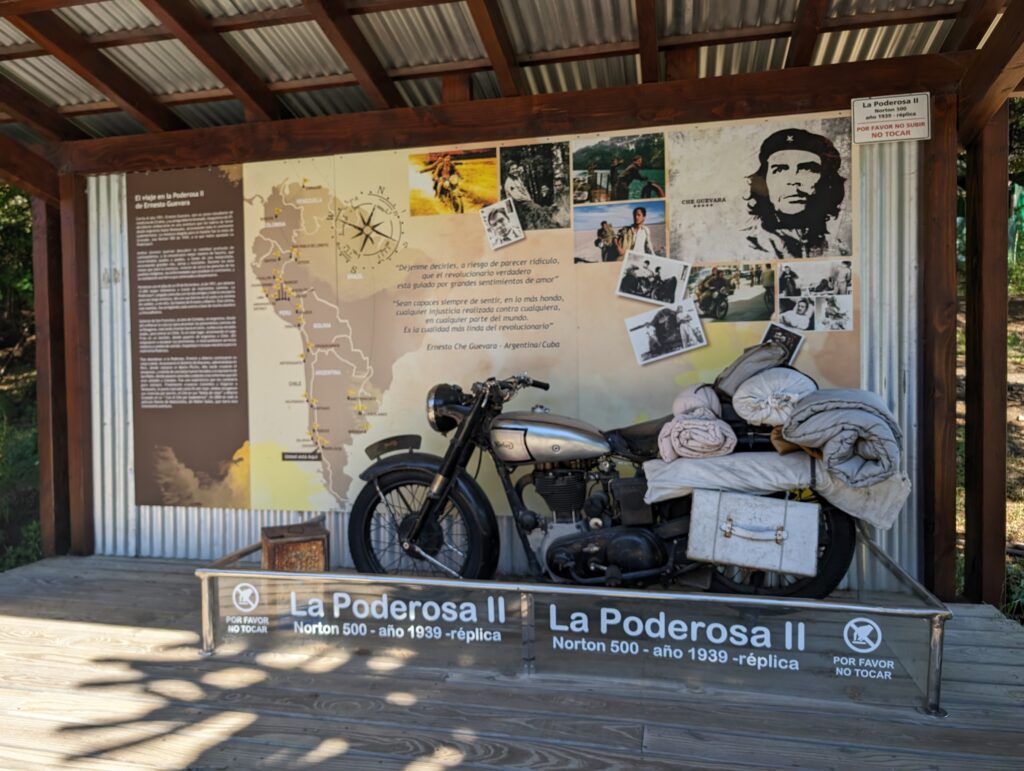
You have the option between doing the full transit over one day or taking your time and making it a longer experience by staying at hotels at some of the different stops along the way. Those that have more time may want to consider a longer journey as it is one of the best ways to fully appreciate the beautiful nature and those that we met highly recommended it to us. Turisur can help organize all of this with hotel reservations and luggage transfer to make the ultimate Cruce Andino for you. You can learn more about all the tours that Cruce Andino provides here.
The Cruce Andino can also be done more actively by biking the portions of the trip that are done by bus. The distance that you will have to bike (or hike) is 121 kilometers (75 miles) and you will have to provide your own bicycle. As you bike this route you will be traversing the same border as Che Guevara when he toured through South America.
The Cruce Andino described below is done from Bariloche to Puerto Varas. The experience can also be done in the other direction, going from Puerto Varas to Bariloche.
The Bus Alternative to the Cruce Andino
If you want to cross the border between Chile and Bariloche faster while visiting the Lakes Districts, you can do the whole journey by bus, which takes a little over 5 hours.
The Unique Landscapes You Will See
The First Two Ferries In Argentina
During the whole Cruce Andino experience, you will take three ferries to cross over various lakes. The first of these ferries occurs in Argentina and each of the lakes provides a unique experience with their own beautiful views.
The first lake, Lago Nahuel Huapi, feels like a boat ride through Switzerland with beautiful mountains all around you. Even some of the buildings that you see may have the Swiss style to them and are reflective of the immigrants that moved here from Europe.
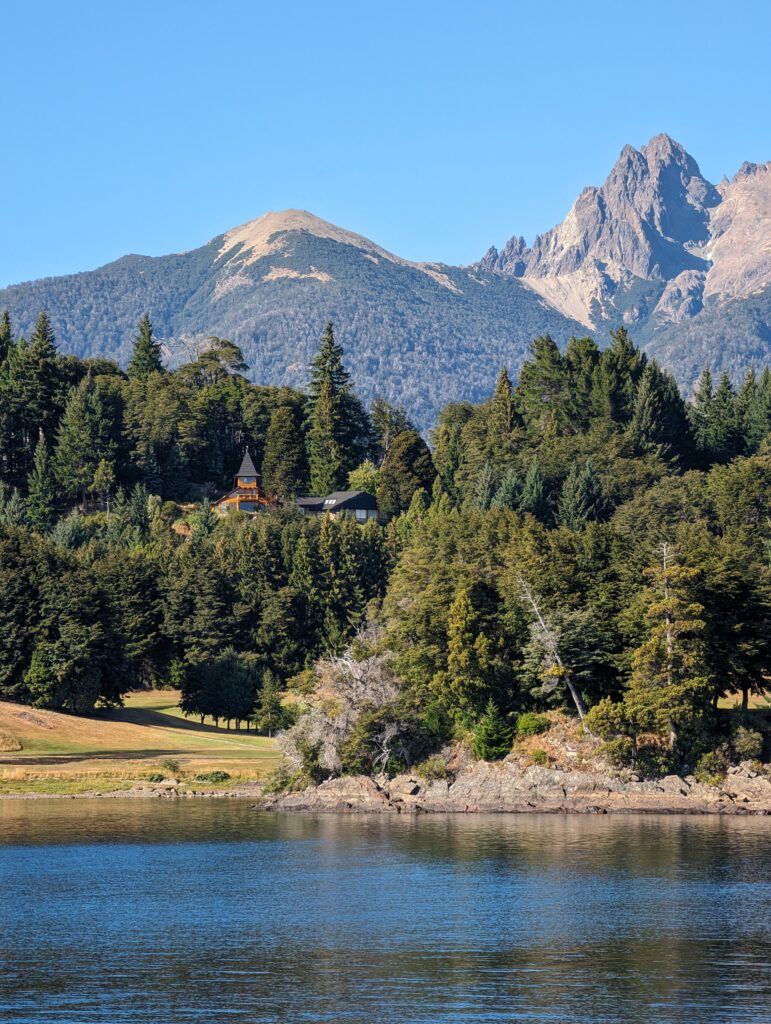
The second lake, Lago Frias, is filled with a beautiful emerald green water, colored like that due to the minerals in the water that change the color it emits. On a particularly sunny day of the Cruce Andino, you will be amazed by the emerald color of the water.
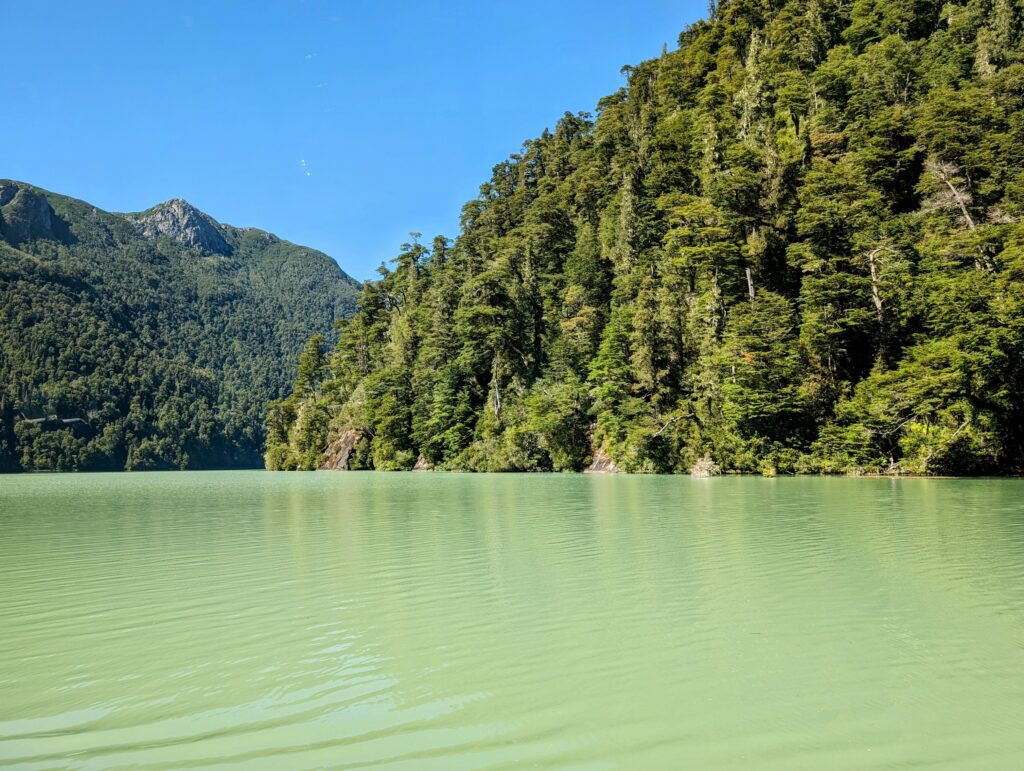
The Border Crossing Between Argentina and Chile
At Lago Frias, you will start the process of crossing the border between Argentina and Chile. Here, next to that replica Che Guevara motorcycle, you will find the border patrol office where you will get stamped out of Argentina. Then, you will take a bus, provided to you as part of the Cruce Andino, to go from customs in Argentina to customs in Chile. (This is the portion that you can do by hiking or biking if you want.) Your guide will show you the exact location of the border change between Chile and Argentina. There will be an opportunity to get out and stop in the no-man’s land between the two countries’ indicated by the wooden posts alongside the road. The guide will also point out the highest peak in the area as well as the unique flora and fauna to this Patagonia region.
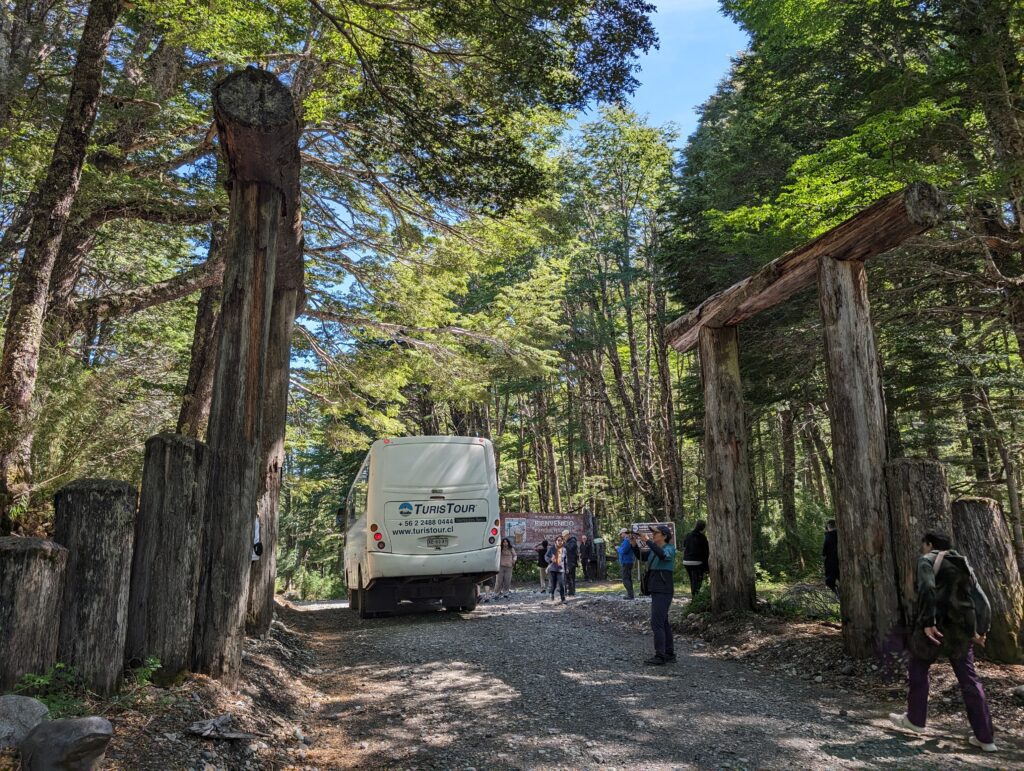
Then, you will go through the customs office in Chile to officially enter into the country. The Chile border patrol will give you a PDI paper, which you cannot lose during your time in Chile. You need this paper to be able to leave the country and to check into hotels within Chile! After going through customs, you will have the opportunity to find a place to eat in the small town of Peulla. Unfortunately, Chile is incredibly strict about bringing in any food products into the country and you cannot pack your own snacks for this part of the journey.
The Final Ferry Crossing
After grabbing lunch, you will start the final portion of the Cruce Andino journey. The third lake that you will traverse, Lago Todos Los Santos, runs adjacent to two enormous volcanos. This region of Chile has a number of volcanoes, some of which are still active, creating a truly unique landscape. This part is the iconic portion of the Cruce Andino voyage. This is also the longest of the ferry rides, allowing you to truly take in the landscapes.
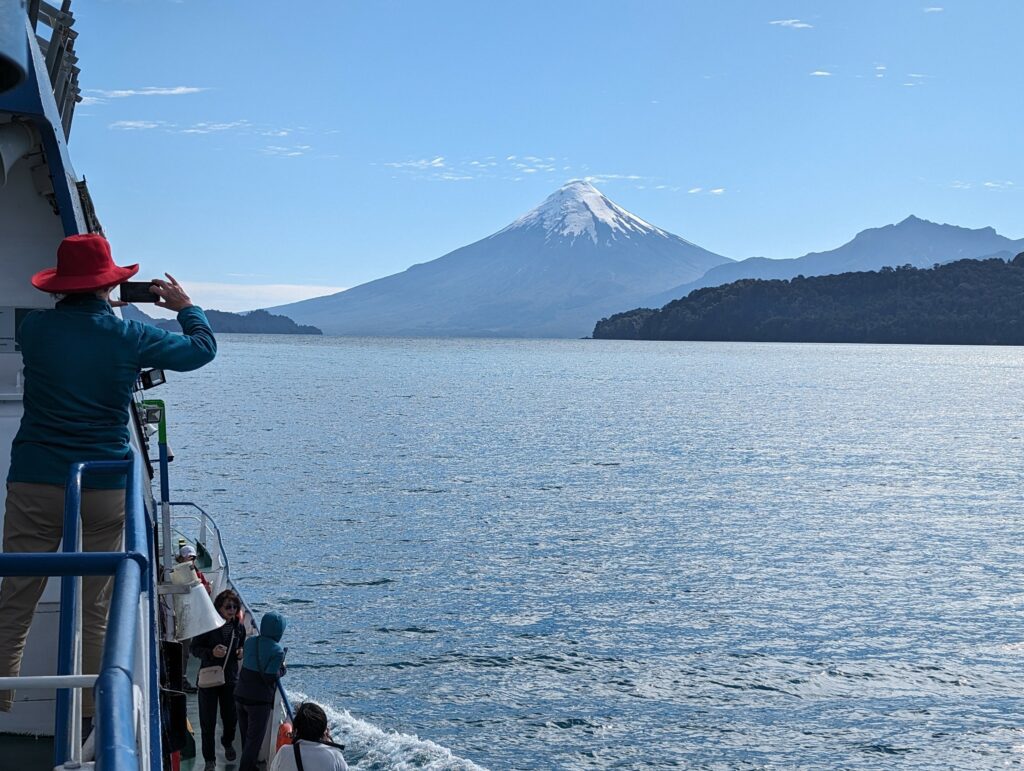
Getting to Puerto Varas
After your final ferry, you will take another bus to get to Puerto Varas, your final stop for this portion of your trip. The route will take you between two volcanoes, Volcan Calbuco and Volcan Osorno, which stand over the town of Puerto Varas and are truly an icon for this region of Chile. To best see the volcano pictured below, sit on the right side of the bus.
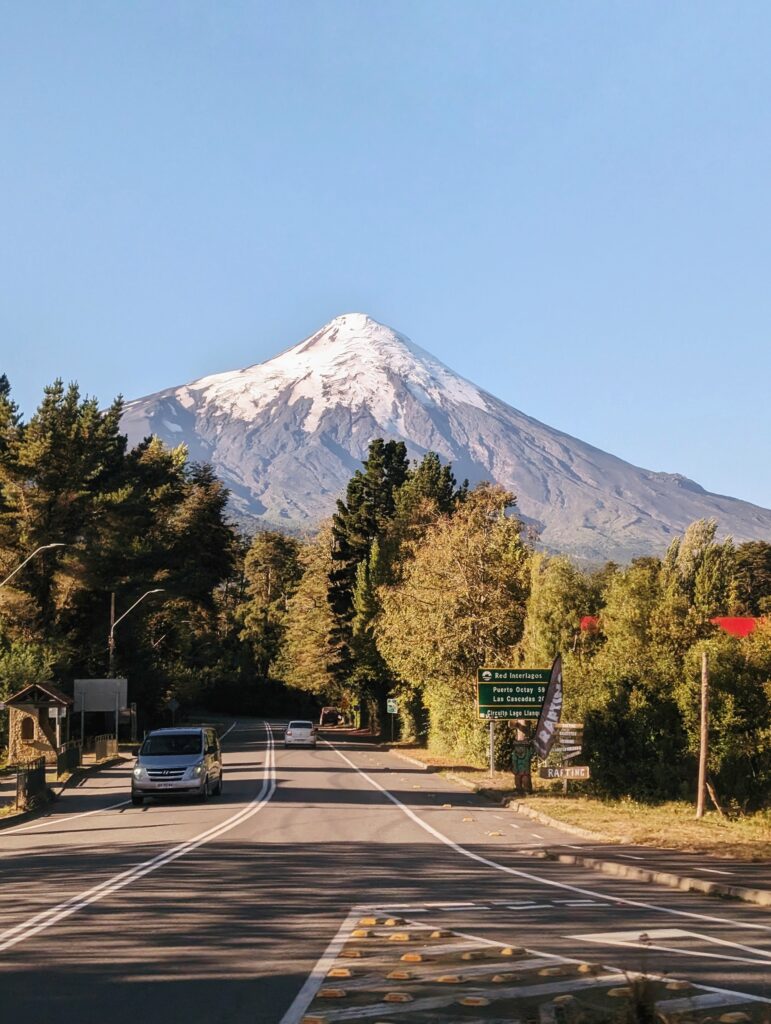
While you can use the Cruce Andino as a means to cross the border from Chile to Argentina, you can also slow down and do the journey as a weekend trip, stopping and staying at hotels at some of the mid-points of the journey. The landscapes are wonderful and waking up with these landscapes around you can be a truly unique experience.

